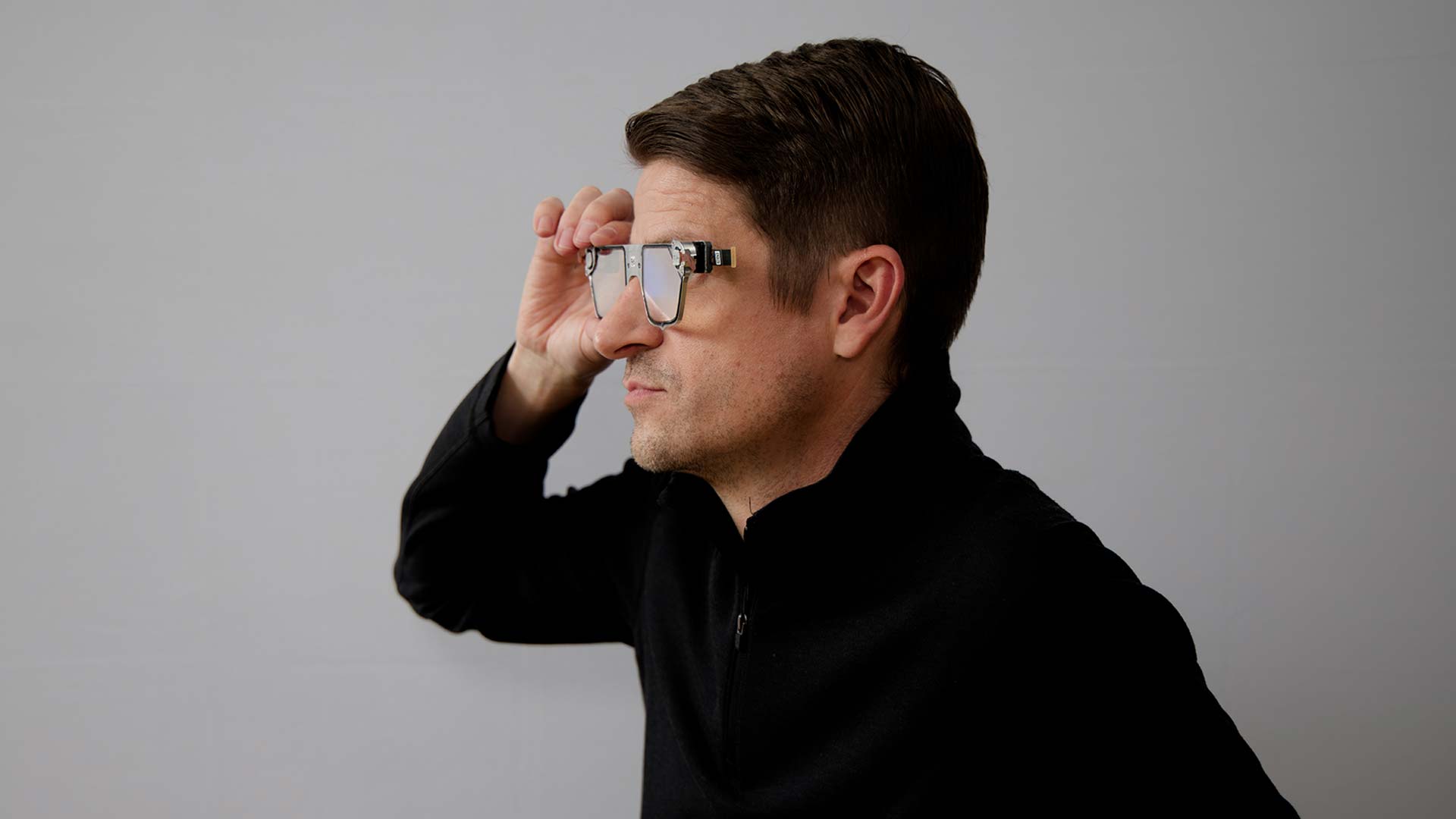Augmented reality (AR) is possible because of the meticulously engineered vision systems that are designed for performance and the human eye. These systems are made up of light engines and waveguides, which are built for clarity, brightness, and long-term comfort and usability.
Light Engines: The Source of Clarity
Every AR image starts with the light engine. Like a movie projector, this tiny component creates digital images that must be:
- Bright enough to compete with natural light in the physical world
- Sharp enough to look real
- Small enough to fit inside lightweight eyewear
Because the light engine powers the display, its performance directly shapes how vivid, legible, and comfortable the AR experience feels. The light engine injects light into the waveguide at the correct angle and intensity, aligning with the rest of the optical stack to maintain the illusion of depth and position.
Brightness is especially important because sunlight can easily wash out low-power displays. To address this, we design our light engines to push through ambient light, ensuring images remain visible, regardless of how bright it is in the environment.
Resolution also plays a key role because crisp visuals help maintain immersion and legibility, especially when digital content is layered over the fine details of the physical world.
Waveguides: Shaping the Optical Path

A critical component in AR is the waveguide, a transparent, ultra-thin optical eyepiece that routes light from the projector to your eyes. Their function is both elegant and complex.
How it works:
- Light enters through a special pattern called an “incoupling grating” tuned to accept red, green, and blue wavelengths.
- Once inside, the light travels through the waveguide using internal reflection, much like light in a fiber optic cable.
- An extraction grating directs the light toward your eyes, allowing you to see the projected image.
Poorly designed waveguides suffer from visual artifacts like rainbows, blurry edges, or uneven brightness. Our designs minimize these distortion issues, delivering clear, uniform images that look natural.
Designing for Various Form Factors

The world of AR is evolving to include more compact, everyday wearables.
This transformation brings a new challenge: fitting powerful optical systems into smaller, more stylish form factors.
To achieve this, waveguides can be adapted to the curved, asymmetric shapes of modern glasses. This approach balances design, comfort, and performance to ensure digital images remain sharp across different face shapes and sizes.
Forward Motion: Designing for Scalable Performance
Since 2010, our research teams have studied how the eye responds to virtual content. These insights guide every device design and ensure that digital images appear at focal depths that feel natural, reducing strain and maximizing long-term comfort.
Eye tracking advancements add another layer of precision. By understanding where a user is looking, we can ensure virtual content stays visible to the eye even if the waveguide or frame shifts over time.
We’re also advancing modular light engines and advanced waveguide fabrication techniques, creating the possibility of high-performance optics across a variety of form factors built for daily use.
Engineered for the Human Eye
By combining deep vision research with cutting-edge optical engineering, we are helping our partners create AR experiences that feel effortless, natural, and human-centered.
We thoughtfully engineer light engines, waveguides, and optical stacks to create visuals that are clear, vibrant, and wearable for extended periods.
Ultimately, designing for performance requires a precise balance between how the eye perceives the physical world and the optimization of each component to deliver the highest-quality experience. When visuals feel natural, comfortable, and intuitive, AR becomes a seamless extension of how we see and experience the world around us.
Learn more about how our human-centered design philosophy results in comfortable and natural-feeling AR devices.